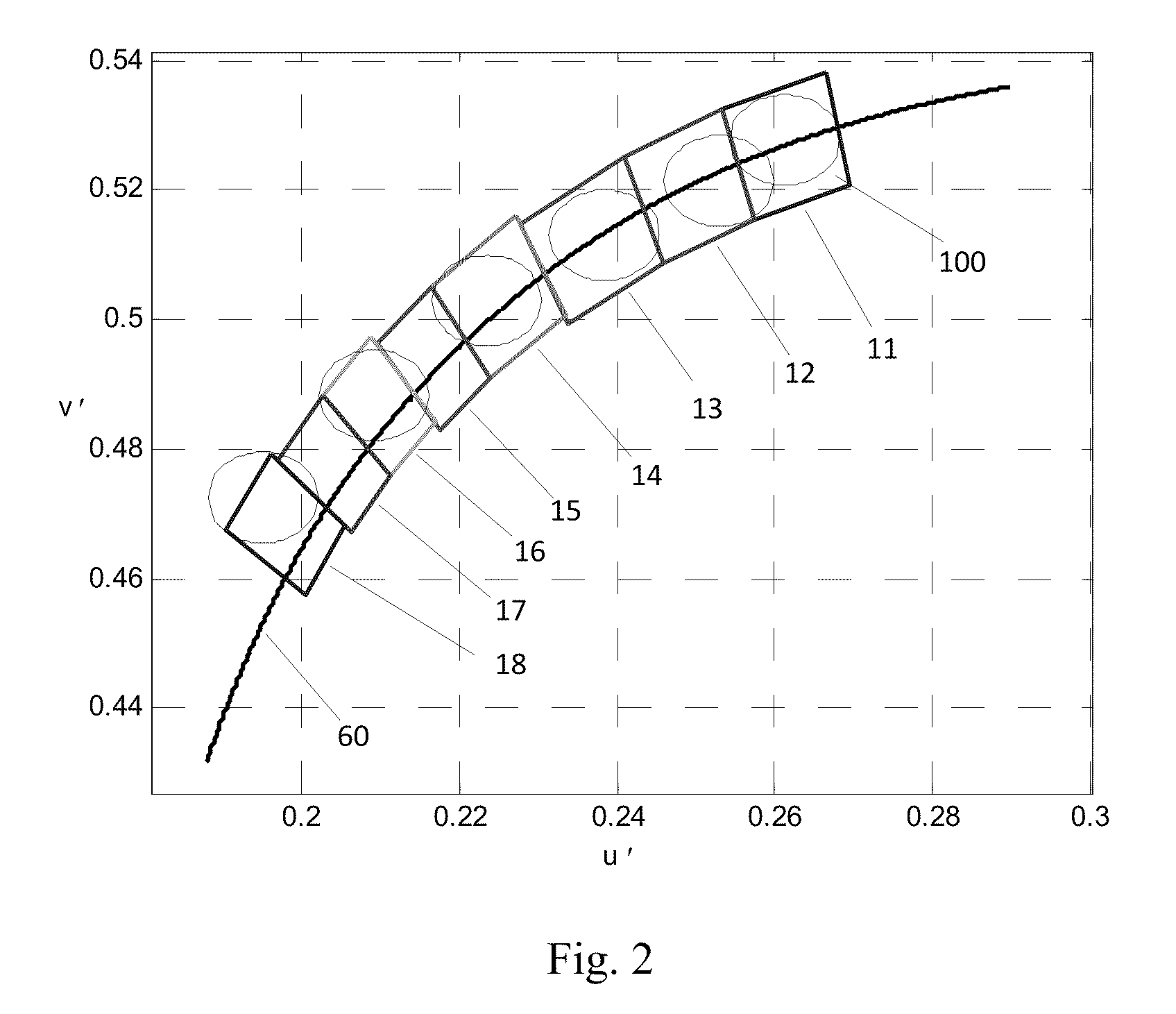Solid-state lighting of a white light with tunable color temperatures
- Summary
- Abstract
- Description
- Claims
- Application Information
AI Technical Summary
Benefits of technology
Problems solved by technology
Method used
Image
Examples
Embodiment Construction
[0037]Although consumers demand a tunable CCT lighting such as warm-white, sun-white, natural-white, or cool-white to help improve the atmosphere in their working, exhibiting, or living areas, there have been no such lighting products in the lamp market. A conventional LED-based recessed down-light or light panel contains tens or hundreds of LEDs to provide enough lumen output with a moderate CRI to replace conventional solar light, HID lamp, incandescent bulbs, fluorescent tubes, halogen lamps, etc. It is not possible for such conventional lightings to tune their CCTs. LED-based lamps, however, provide the easiest way for such CCT tunability. Therefore, a residential or commercial consumer is most likely to buy such solid-state lighting (SSL) because of this feature rather than a simple consideration of energy savings and extended lifetime of the SSL.
[0038]In general lighting applications, a solid-state white light with a CRI greater than 80 and within one of eight correlated color...
PUM
 Login to View More
Login to View More Abstract
Description
Claims
Application Information
 Login to View More
Login to View More - R&D
- Intellectual Property
- Life Sciences
- Materials
- Tech Scout
- Unparalleled Data Quality
- Higher Quality Content
- 60% Fewer Hallucinations
Browse by: Latest US Patents, China's latest patents, Technical Efficacy Thesaurus, Application Domain, Technology Topic, Popular Technical Reports.
© 2025 PatSnap. All rights reserved.Legal|Privacy policy|Modern Slavery Act Transparency Statement|Sitemap|About US| Contact US: help@patsnap.com



